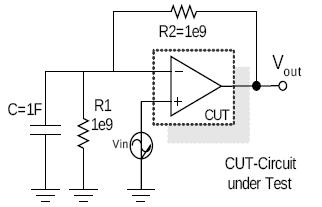sykab
Member level 2
ac analysis break loop
Hi!
I’m trying to design, in Cadence, a single-ended CMOS AMPOP and I need to make a ac analysis. Actually, I’m using this schematic as a test bench‘s. Is that right? The problem is that I don’t know what kind of vin should I specify for my analysis:?:

Furthermore, I would like to ask if someone can give me or advice me some kind of information/book about simple single-ended CMOS AMPOP 0,35 µm.
Thanks! [/b]
[/b]
Hi!
I’m trying to design, in Cadence, a single-ended CMOS AMPOP and I need to make a ac analysis. Actually, I’m using this schematic as a test bench‘s. Is that right? The problem is that I don’t know what kind of vin should I specify for my analysis:?:

Furthermore, I would like to ask if someone can give me or advice me some kind of information/book about simple single-ended CMOS AMPOP 0,35 µm.
Thanks!
